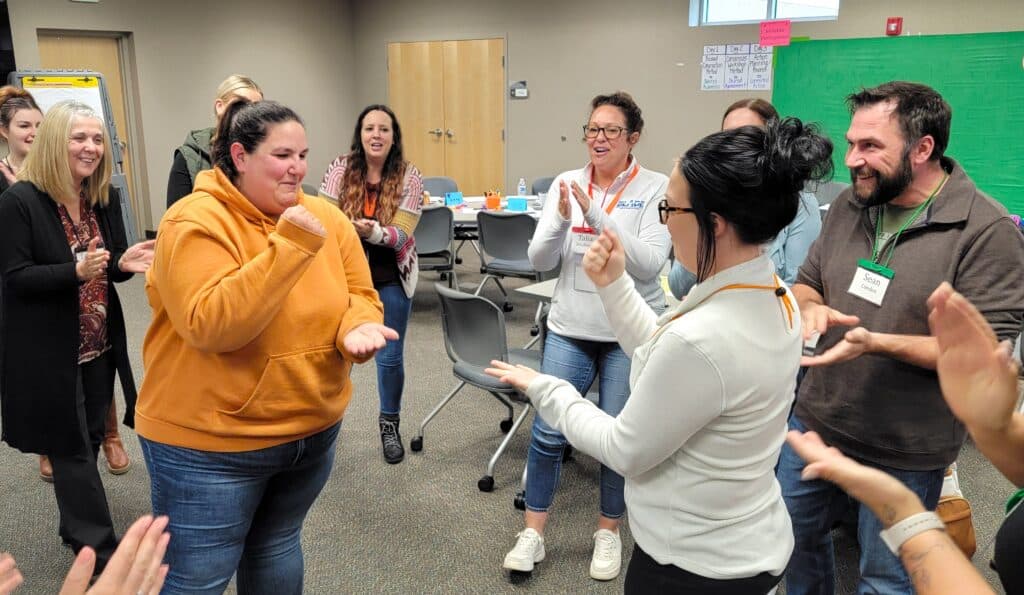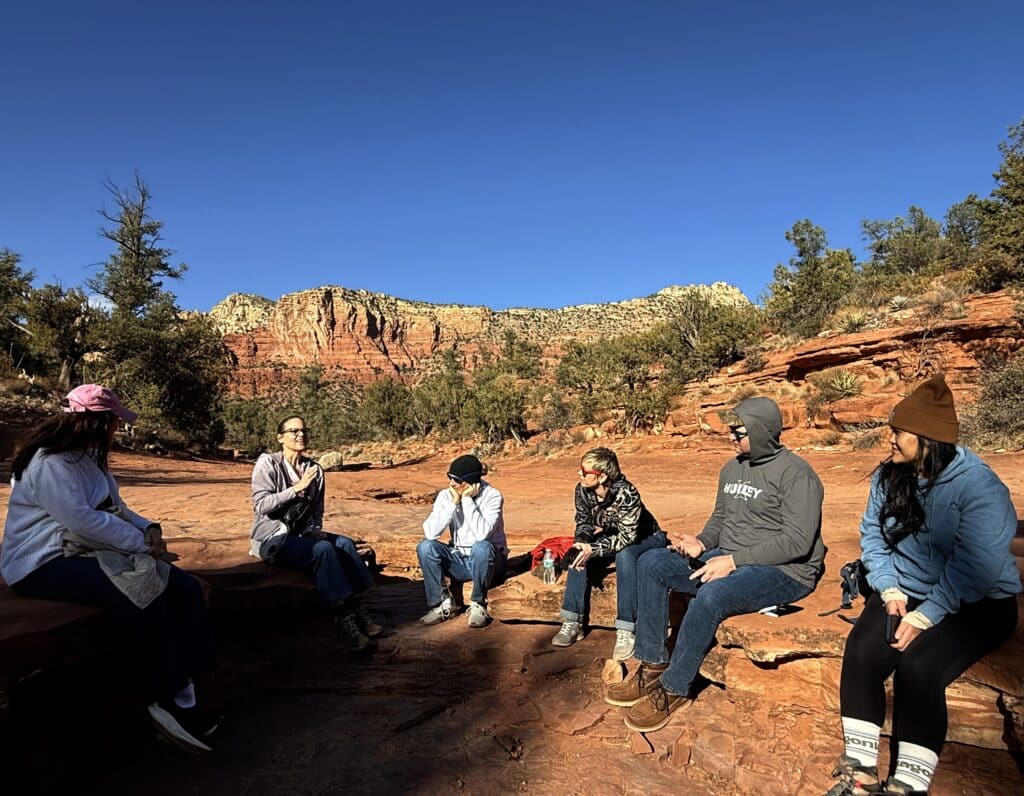We’ve all been there—kicking off a meeting, workshop, or training session only to be met with blank stares, low energy, or hesitant participation. In another scenario, the day started of great and then lunch happened or a challenging conversation was had and the energy drops. The right icebreaker or energizer can be the key to turning that around, creating an atmosphere where people feel comfortable, (re)engaged, and ready to participate.
At HueLife, we specialize in facilitation and training that transforms group dynamics. To help you overcome disengagement, our team has compiled six of our favorite icebreakers and energizers that are actually engaging—each tested and loved by our expert facilitators. We’ll share our go-to activities, explaining why they work and how to use them effectively.
Whether you’re leading a team meeting, a training session, or a community event, these activities will help you spark connection, boost energy, and get participants engaged. Let’s dive in!


Megan Jacobson is a trainer, facilitator, and our Insights Coordinator. If we ever need ideas on how to energize a group and build a sense of team, she’s the one we turn to. Here are her favorite activities for getting people engaged and connected.
This activity helps participants connect on a personal level by sharing a glimpse of their lives outside of work or the training room. It’s a simple yet effective way to encourage storytelling and build rapport.
This high-energy game builds excitement and a sense of team spirit while adding a fun competitive edge.
Irina Fursman, our Co-Founder and CEO, knows that a great facilitator brings people together through meaningful connection and engaging activities. Here are two of her favorite ways to break the ice and energize a group.
This activity sparks curiosity and conversation by visually mapping out participants’ experiences and travel histories. It’s a great way to build connections through shared or unique locations.
This dynamic game enhances group coordination, focus, and adaptability while injecting energy into the room.




As our Director of Community Engagement, Flower Krutina knows the power of storytelling and connection. Her go-to activities encourage personal reflection, vulnerability, and a fresh perspective—perfect for creating meaningful engagement.
This activity invites participants to share a bit about themselves in a way that feels natural and authentic, fostering connection and setting a shared intention for the session.
When energy dips, a change of scenery and fresh air can do wonders for focus and re-engagement. This activity taps into the science-backed benefits of nature and movement. Spending time in nature lowers cortisol levels and increases dopamine and serotonin—the brain’s feel-good chemicals. Exposure to fresh air and natural surroundings also enhances cognitive function and creativity by giving the brain a break from constant stimulation, allowing for better problem-solving and renewed energy.
If you are interested in learning more techniques, our interactive courses are the place to be! We are also happy to come in as facilitators and collaborate with you on the best activities for your team, so that you can participate with them which allows you to stay present and engaged throughout the process. Simply email us at info@hue.life – Let’s get started!